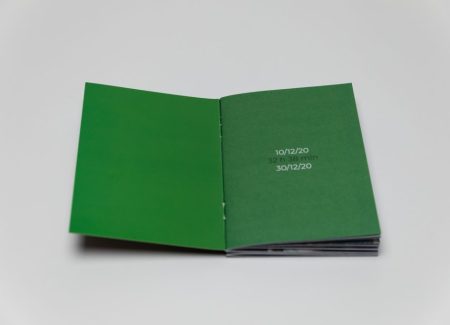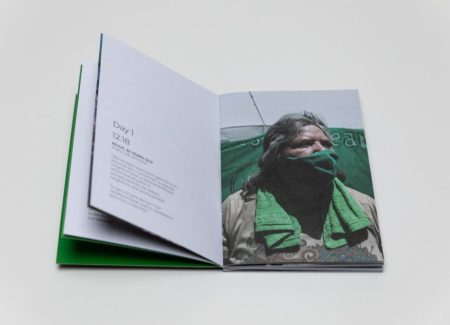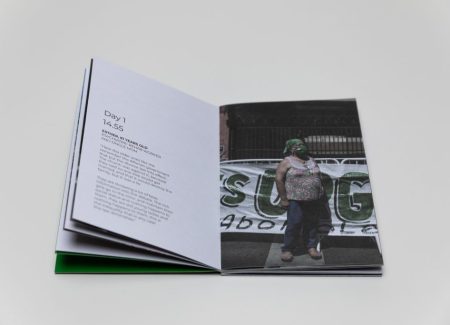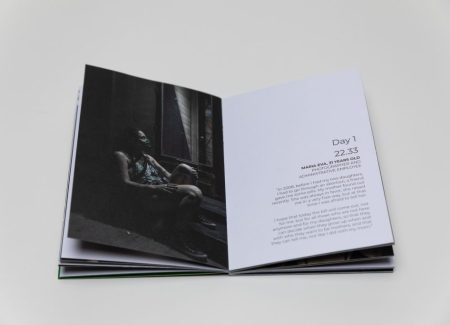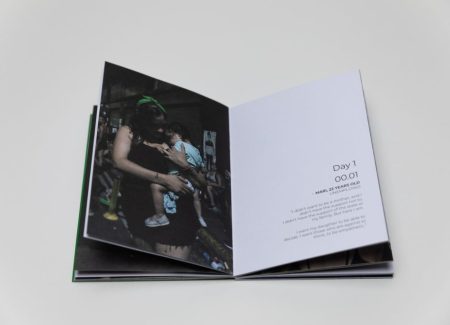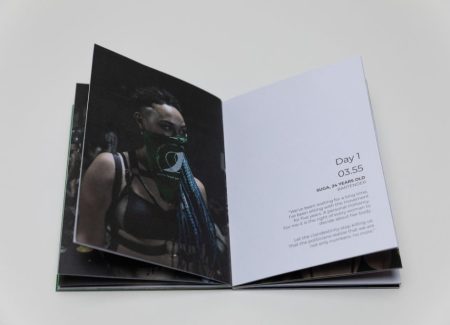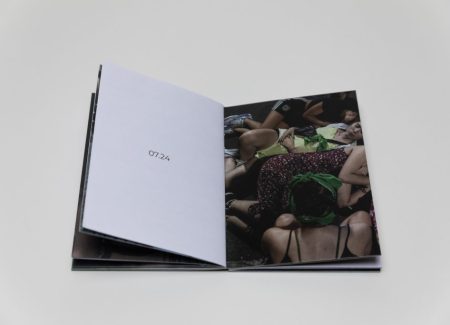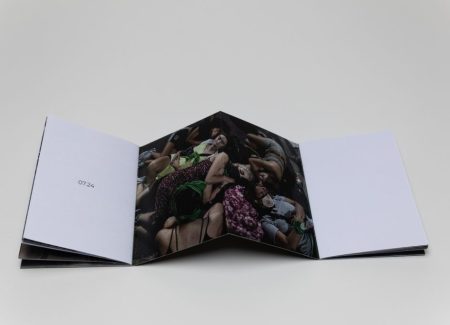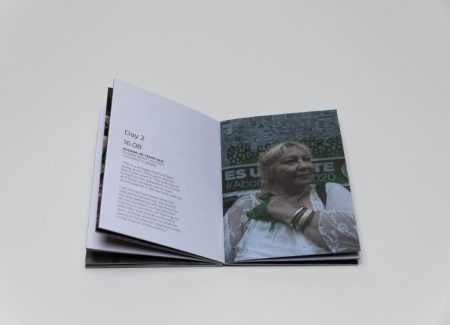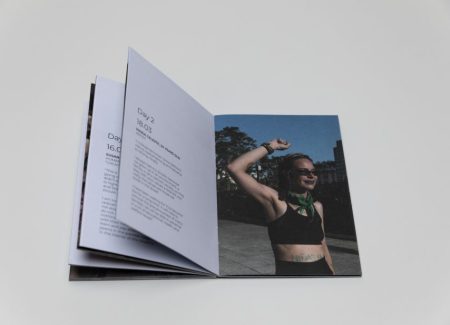JTF (just the facts): Self-published in 2021 (here). Softcover (10 x 15 cm), 56 pages, with 24 color photographs. Includes an essay by the artist. (Cover and spread shots below.)
Comments/Context: In December 2020, in a historic vote, Argentina legalized abortion, becoming the largest Latin American country to do so in an otherwise conservative region. The Argentinian senate approved the historic change by a 38-29 margin with one abstention, and the result was announced at just after 4AM. The decision came after years of organizing within the Argentine abortion-rights movement – it was a big victory for a grass-roots movement that had harnessed rallies into political power and change.
The French-Argentinian photojournalist Anita Pouchard Serra was covering the events, and she wanted to be there not only as a photojournalist but also as a citizen. So she started talking to women she encountered during those days, and offers her documentation of the historic events in her self-published photozine titled Espera(nza). A small but mighty publication, it documents two nights of protests that took place just before the vote. Pouchard Serra’s portraits of the protesters are placed next to their testimonies; in each case, she had short conversations with them and asked three main questions: “how long have you been waiting for this moment, what does the legalization represent and what would you say to those who are on the other side, against it.”
Espera(nza) is rather small in size, and it comfortably fits in hand. Construction-wise, the book brings together two connected booklets, each booklet represents a specific night of rallies, and they are bound together by a cover that shows people hugging. Green – the color of the pro-abortion movement – is the dominant color in the publication, while the book is held together by two thin blue threads, the color of the opposition. The act of opening the book also symbolically lets the people’s voices out. The title of the book brings together two Spanish words, “espera” meaning “wait” and “esperanza” meaning “hope”, and reflects the mood and emotions of the people on the streets.
The organizing concept behind Pouchard Serra’s book is both simple and powerful. A portrait of a protester is placed next to her testimony, and she has also included names, ages, and professional affiliations, with the exact time the conversation was recorded. The portraits are taken outside with natural light and often capture other protesters nearby. The time stamp next to these stories amplifies the years of waiting, but also counts the moments leading up the vote.
The women Pouchard Serra has documented come from various backgrounds, occupations, and walks of life. The first spread shows Virginia, photographed on the street in a green dress – it is morning, 11:05 am. She is 42 years old and works as an administrative employee. She reflects about the ongoing demonstration, sharing her views: “I have been waiting for this moment since I was a child, I think there is inequality and injustice towards women. Legalization means at least that women stop dying from clandestine abortions, the difference is whether it is legal or clandestine. Illegal abortion is violence.”
Another woman named Patricia, photographed wearing a green top and a mask, shares: “abortion gives you the freedom to choose what to do with your body, clandestine abortion is killing many girls and the most vulnerable women, it is an issue that goes beyond feminism, it is a social issue.” Mari, who is 22 years old, is photographed on the street holding her daughter. She says that she didn’t want to be a mother, and didn’t get the support from her family or the government. She wants her daughter to be able to make her own choice.
Espera(nza) brings forward the voices of 24 women, and everyone has their own story and reasons for supporting the legalization of abortion and the growing women’s movement that put reproductive rights in the spotlight. The very last spread captures a woman – it is late at night, and protesters with signs are seen behind her. Her name is Paula and she is 44 years old. “Today I want to return home with the law, for my daughters and for everyone.” Through these portraits and testimonies, Pouchard Serra powerfully documents the on-the-ground feelings of the moment and the reactions of the people. Ultimately, abortion legalization won because of the persuasive power of street activism.
Espera(nza) exists as an immediate reaction to unfolding events, and it reflects the artist’s demand to participate and to take a stand. Presented as a simple and straightforward publication, it puts its emphasis on the movement and its people, capturing history as it was unfolding on the streets. It’s a well-conceived contemporary protest book, and a valuable contribution to the broad range of significant protest photobooks published in the region.
Collector’s POV: Anita Pouchard Serra does not appear to have consistent gallery representation at this time. As a result, interested collectors should likely follow up directly with the artist via her website (linked in the sidebar).

